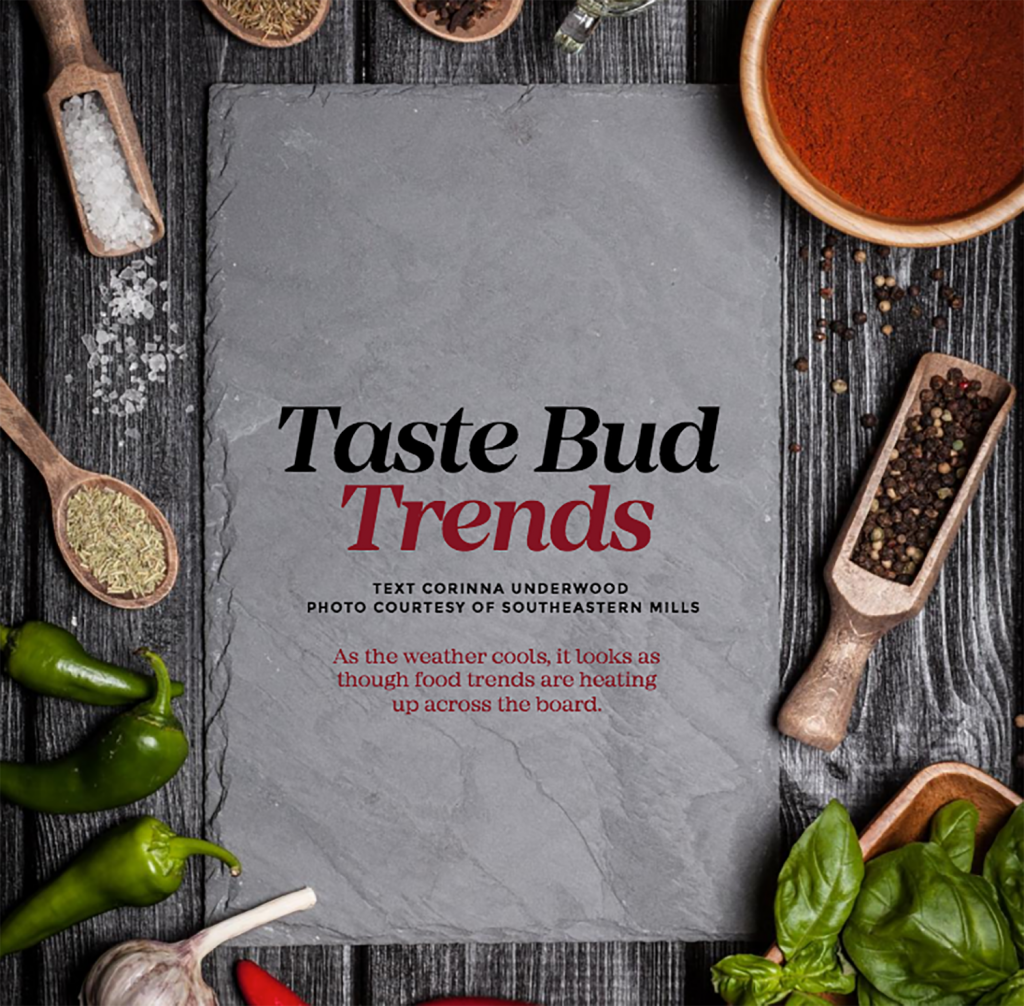
Restaurants throughout America are adding tastier dishes to their menus every day thanks to a growing influx of unique flavors and global cuisines. And whatever is trending in culinary circles is something that Elisa Gumbel knows all about. For the past year-and-a-half, she has been the business-to-business marketing manager for Southeastern Mills – a fourth-generation food company with its headquarters here in Rome. As such, she manages national restaurant accounts for the company, which provides a wide range of ingredients solutions for food processors, food service companies and consumers.
“It’s my role to bring all the trends forward, to help them pick the best menu for either a limited time offer or a core menu item,” Gumbel explains.
Food trend research is not just a matter of reading the latest market studies on tastes and restaurant menus, she explains. What’s crucial is to get out there on the food scene and find out what is being served.
“Being out in the industry is actually the best way to do it,” Gumbel says. “Outside of my job, I’m also very passionate about the restaurant industry. I make it a point to follow chefs in social media. I travel quite a bit, so I make sure whatever city I end up in, I’m finding the newest chefs, finding the newest restaurants and trying something that’s going to help me come up with the next great idea in partnership with our culinary team.”
So what’s hot on the menus right now? Over the past year, there have been a couple of major trends, according to Gumbel. The first, known as “Latin Heat,” is growing quickly throughout the U.S. While consumers have enjoyed spicy Latin foods for a long time, Gumbel says that they are now learning more about the types of peppers they prefer, and it’s not always about the heat.
“It’s about the complexity of flavors,” she explains. “One example is the (Peruvian) aji pepper, which is a lot brighter than it is hot but had such a unique flavor profile, anything you add it to will get a great twist.”
From Cuba to Chile and Mexico to Argentina, Latin spices are tempting American palates with their flavors. But the second trending cuisine Gumbel mentions has a rather different attraction and comes from Hawaii. The dishes, which include Asian and Portuguese influences, have bright citrus flavors.
“They [Hawaiian chefs] love yuzu (a Korean citrus fruit) and lemon, and you’ll also see pineapple a lot,” Gumbel says. “These will be added to rice and pork dishes and are also very trendy right now.”
The Hawaiian taste influx is largely due to the regionality of the dishes, which itself is a popular new trend.
“Everyone is excited about regionality,” Gumbel explains. “Whereas a few years ago we would eat things that were grown relatively close to home, our footprint has been growing and we got to try food from other states and then from other countries. Now we realize that even though we’ve tasted Asian food and Mexican food and French cuisine, we still have a lot to learn about their origins.”
As the Hispanic demographic is becoming one of the fastest-growing within the American population, the addition of this rich culture is deepening our knowledge of the timeless Latin Heat cuisine, which has ingredients dating back as far as the Aztecs and Mayans. Although we may see some new food trends over the coming year, Gumbel says these two are definitely here to stay.
HOT LATIN INFLUENCES
Choclo-Filled Ravioli with Aji Sauce: This Peruvian dish is a corn-filled pasta drizzled with aji pepper sauce.
Coxhinas: This is a Brazilian dish comprised of deep fried balls of creamy, shredded chicken served with crisp salsa.
Lamb Albondigas Stew: A Cuban meatball soup that is rich with the flavors of tomatoes, mint and serrano peppers.
Rum-Glazed Pork: Another Cuban favorite, which blends the flavors of melt-in-your-mouth tenderloin with a rich molasses and rum glaze. This dish is often serves with plantains and pineapple relish.
HOT HAWAIIAN INFLUENCES
Poke: This marinated raw fish dish is served in a bowl and enables you to choose your own fish and toppings.
Lau Lau: This native dish consists of teamed pork and fish wrapped in taro leaves.
Squid Luau: A dish made from luau leaves and squid, cooked until tender in coconut leaves.
Huli Huli Chicken: This is a dish of tender chicken breasts marinated in a blend of pineapple juice, brown sugar, soy sauce, garlic and wine.


